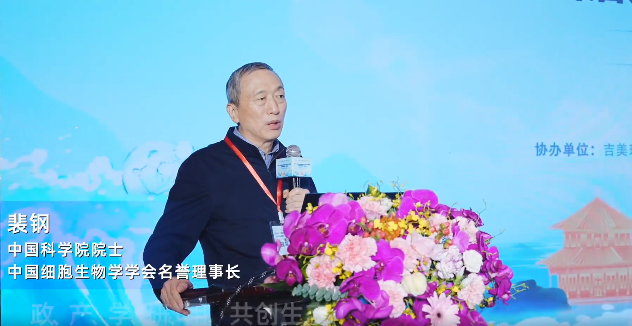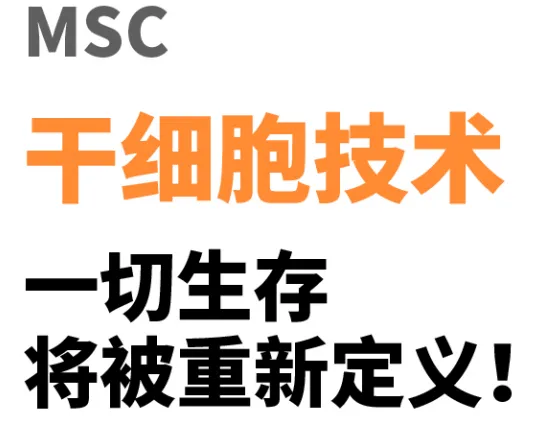

At the forefront of modern biotechnology, stem cells are gradually changing the face of medicine with their unique potential and wide application prospects. Pei Gang, academician of the Chinese Academy of Sciences and honorary president of the Chinese Society for Cell Biology, has publicly stated that theoretically, stem cells have the potential to change the fate of each individual and the entire human society. This view has captured the imaginations and hopes of countless people. So, what exactly are stem cells? Why is it considered to have such great potential? At present, what is our country's international status in this field?
What are stem cells?
Stem cells are a type of cells that have the potential to self-renew and differentiate. In simple terms, stem cells can generate cells identical to themselves during division, while also differentiating into other cell types. According to their differentiation ability, stem cells can be divided into totipotent stem cells, pluripotent stem cells and monopotent stem cells. Among them, totipotent stem cells can differentiate into any kind of cell, including the ability to form a complete individual; Pluripotent stem cells can differentiate into any cell except the placenta. Monopotent stem cells can only differentiate into specific types of cells.

How can stem cells change everyone's life?
1.Treating intractable diseases: Stem cells show great potential in regenerative medicine. For example, stem cells can be used to repair damaged tissue from heart disease, stroke, spinal cord injury and other intractable diseases. In the treatment of diabetes, scientists have successfully used stem cells to generate islet cells, which may achieve the restoration of islet function in the future.
2.Anti-aging and life extension: Stem cell therapy is also important in anti-aging. By replacing and repairing senescent cells, stem cells can delay the aging process and improve the quality of life in old age.
3.Personalized Medicine: Stem cell technology offers new possibilities for personalized medicine. The use of patients' own cells for treatment can avoid immune rejection and achieve a more efficient and safe therapeutic effect. By inducing stem cell differentiation under specific conditions, various types of somatic cells such as liver cells, kidney cells, lung cells and heart cells can be generated, and then the corresponding human organs can be constructed by tissue engineering means. The perfection and development of this technology is expected to revolutionize the field of organ transplantation, alleviate the problem of organ shortage, and bring new life to countless patients.
How can stem cells change human society?
1. Improve public health: Stem cell technology is expected to play an important role in large-scale treatment and prevention of diseases, improve the overall public health level, and reduce the social medical burden.
2. Promote the progress of biotechnology: the breakthrough of stem cell research will promote the overall development of biotechnology, give birth to new medical technologies and treatment methods, and drive the progress and innovation of related industries.
3. Economic and social benefits: The development of stem cell technology will create a large number of jobs and promote economic growth. Biopharmaceutical, medical equipment, health management and other related industries will usher in new development opportunities.

The international status of China's stem cell research
In recent years, China has made remarkable progress in the field of stem cell research. Although it still faces some bottlenecks in the process of clinical transformation, its research results in many fields have reached the international leading level.
1. Fruitful scientific research achievements: Chinese scientists have made important breakthroughs in both basic research and clinical application of stem cells. For example, the Chinese team successfully used induced pluripotent stem cells (iPS cells) to generate cardiomyocytes, bringing new hope for the treatment of heart disease. In addition, by utilizing self-regenerating islets derived from iPSC, only 11 weeks after transplantation, diabetic patients gradually became free of dependence on exogenous insulin. These breakthroughs not only demonstrate China's innovative capabilities in stem cell research, but also bring new treatment options to many patients.
2. Policy support and investment: The Chinese government attaches great importance to stem cell research, has introduced a number of policies to support the development of related fields, and has significantly increased the investment in scientific research. At the same time, the active participation of the capital market has provided solid financial support for the rapid development of stem cell technology. National and local governments have also set up special funds to encourage research institutions and enterprises to carry out stem cell research and application, accelerating the transformation and promotion of technology.
3. International cooperation and exchange: China has actively participated in international stem cell research cooperation, conducted joint research and technical exchanges with scientists from many countries, and increased its influence in the international academic community. Through international cooperation, Chinese scientists have not only drawn on the research experience of advanced countries, but also promoted the development of stem cell technology globally. Regular international academic conferences and seminars have provided a good platform for exchanges between China and its global counterparts, promoting knowledge sharing and technology integration.
Conclusion
As an important part of modern biomedicine, stem cells have great potential to change the fate of each individual and the whole human society. With the continuous progress of science and technology, stem cell technology will play an increasingly important role in disease treatment, anti-aging, personalized medicine, etc., bringing a healthier and better future to mankind. China's rapid development and increased international influence in this field have also injected new impetus into global stem cell research. In the future, the light of stem cells will be more dazzling and light up the road of mankind.